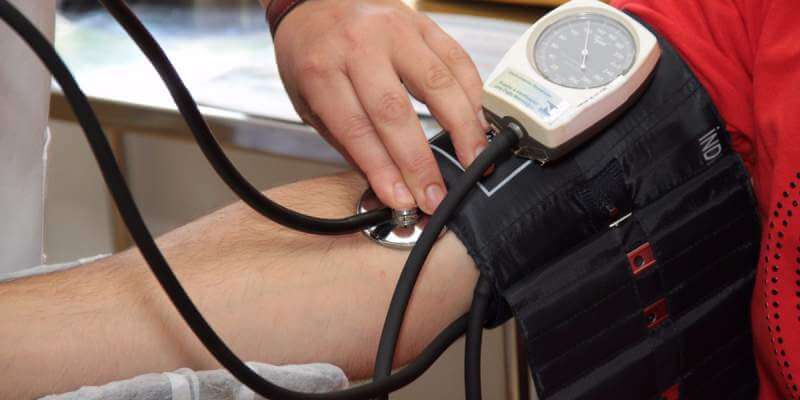Blood pressure is the result of your heart pumping blood, with the blood pushing against the blood vessel walls. This is necessary so that every organ in your body can function well. High blood pressure is often referred to as a silent killer. This is because it has close to no symptoms, which means that many people do not even know they may be suffering from high blood pressure – until it is too late. For many, they find out that they have high blood pressure following a check-up where it is routine for high blood pressure is amongst the vital signs checked. If it is found that one has high blood pressure, then it must be understood as well as managed. Here are some symptoms that you should understand.

High Blood Pressure Symptoms
When high blood pressure increases in severity, there are several symptoms that may surface. These include severe headaches which may feel like head is splitting. There may also be vision changes which leads to double vision or challenges seeing in bright light. Nausea and vomiting are also a symptom that can occur. It is also possible to experience some confusion and lack of understanding on what is happening around them.
Managing High Blood Pressure
Once it is noticed that one has high blood pressure, the next step is to ensure that it is well managed. It is close to impossible to get rid of high blood pressure completely, but it can be managed and kept low to prevent it from being life threatening. This is mainly done through medication, and some healthy lifestyle choices can be made as well.
- A healthy diet is key to managing your blood pressure in the most natural way possible. This starts by what you choose to eat. Foods that are high in potassium are especially effective for lowering blood pressure, as are fresh vegetables and fruits. When consuming protein, especially animal protein, it should be lean and any dairy should be low in fat. Most importantly, you need to bring down the amount of sodium that you are consuming by cutting out salt from the diet.
- Weight management is next when it comes to managing your blood pressure, so you should ensure that you lose weight until you are at a healthy BMI. Losing weight is the first part of the journey, and the next is maintaining that weight. This puts less strain on your body.
- Getting adequate exercise will also help lower the blood pressure and this is possible once one gets regular physical activity. This would entail something as gentle as at least thirty minutes walking each day, or even doing some yoga and meditation to help centre your mind and body.
Checking on Your Blood Pressure
In addition to these lifestyle choices, you need to keep track of your high blood pressure so that you can take preventive measures where necessary. This means being able to manage your symptoms by monitoring blood pressure at home, You can accomplish this by making use of a blood pressure monitor which you can get for use at home. You will need to be able to understand the two numbers that reveal blood pressure. These include the systolic blood pressure which is the upper number. It will reveal the amount of pressure your blood is pushing against your artery walls each time your heart is pumping blood. The second number is the diastolic blood pressure which is the lower number. It reveals the amount of pressure the blood is exerting against the walls of the artery while the heart rests in between beats.
Prehypertension occurs when the systolic blood pressure reading is 120-139 or the diastolic blood pressure reading is 80-89. Though this may not indicate that the blood pressure is dangerously high, it does communicate that it is on the rise and is above normal. Hypertension occurs when the systolic blood pressure is 140 or more, and the diastolic blood pressure is 90 or more.
When monitoring your blood pressure from home, begin by making sure that you have rested well for at least five minutes before you need to take a measurement. Once the five minutes are up, sit on a chair where you can maintain good posture and keep both of your feet flat on the floor. Make sure that your back as well as your arm is supported on an arm rest. You need to keep your arm at heart level. Ensure that your arm is bare as you place the cuff to check your blood pressure. You should check your blood pressure at least twice each morning as well as twice each evening. This should be done for seven full days before you have an appointment with the doctor. Then, you keep track of all the readings so that you can share them with the doctor.
To ensure that there is no interference with the results, it is important to avoid drinking any alcohol or caffeine at least half an hour before you do your reading. Furthermore, you need to maintain the same discipline if you are a smoker. During the reading, do not talk at all or do any sudden movements. Stay as calm as possible and your readings will be accurate.
When you have high blood pressure, you do not have a cure. It is even more challenging to determine what the cause of the high blood pressure may be. Instead, it is necessary to make a conscious decision about the way that the high blood pressure can be managed effectively. Whether you choose to manage your high blood pressure at home, or seek treatment in a facility, you need to talk with your doctor. Together, you will be able to create a treatment plan that factors in all the activities and lifestyle changes that could be of benefit, as well as the medication you should take that could make a lasting difference.
